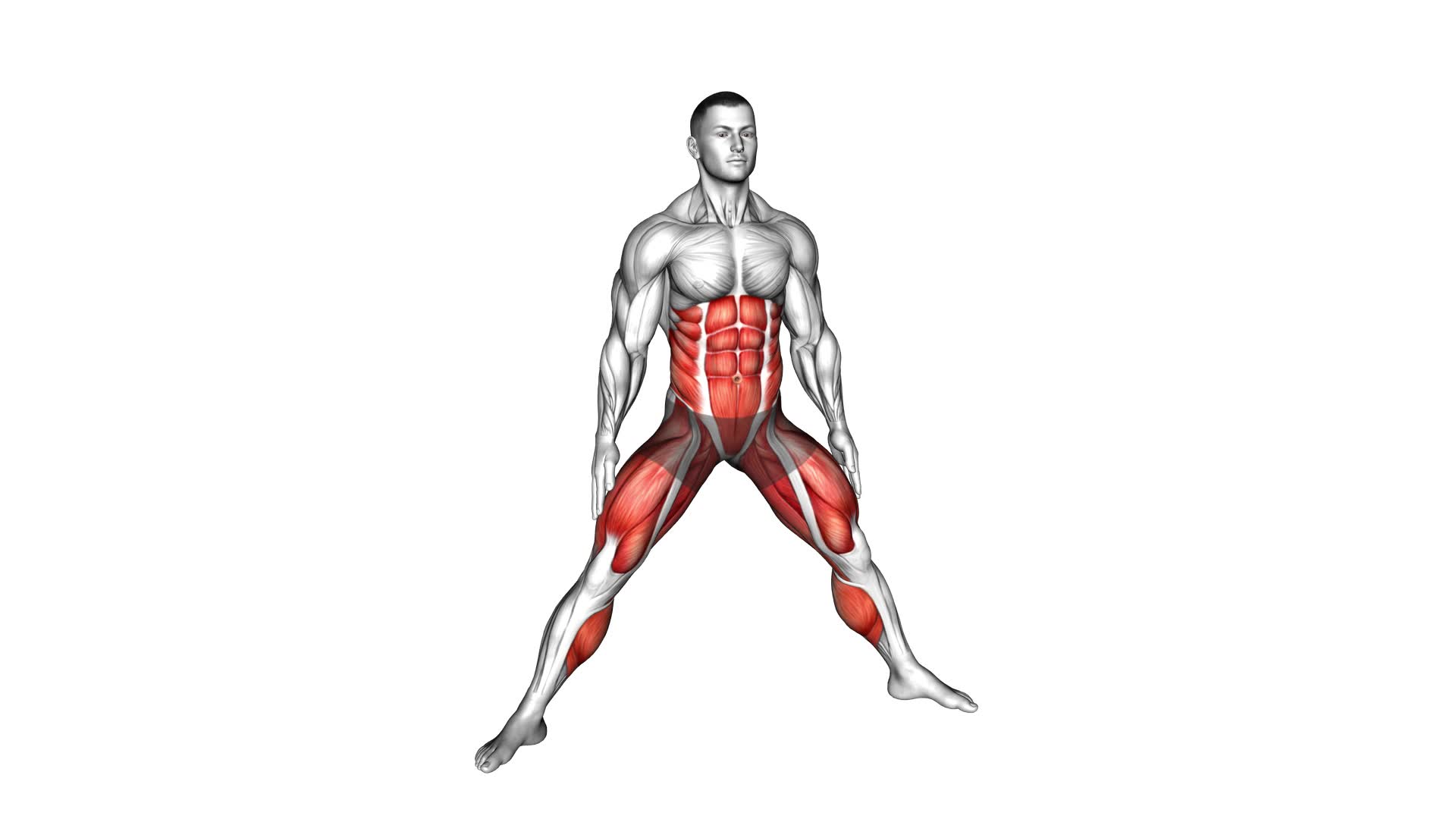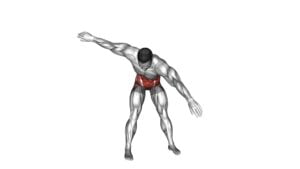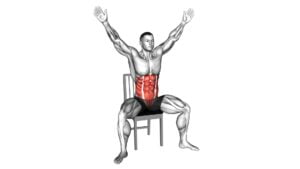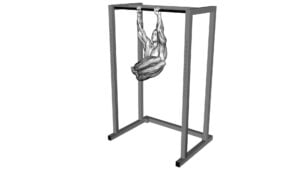Side Lunge Windmill – Video Exercise Guide & Tips

Are you looking for a new exercise to add some variety to your workout routine? Look no further than the side lunge windmill.
Watch This Exercise Video
This video exercise guide and tips article will show you the proper form and technique, equipment needed, modifications for different fitness levels, common mistakes to avoid, and tips for incorporating the side lunge windmill into your workouts.
Get ready to feel the burn and strengthen those legs and core!
Key Takeaways
- Increased flexibility in the hip and groin muscles
- Improved range of motion and injury prevention
- Enhanced performance in running, jumping, and squatting
- Engages multiple muscle groups, including glutes, hamstrings, and core
Benefits of the Side Lunge Windmill
One benefit of the Side Lunge Windmill is increased flexibility in the hip and groin muscles. This exercise specifically targets these areas, helping to improve your range of motion and prevent injuries.
By performing the Side Lunge Windmill regularly, you can enhance the flexibility of your hip and groin muscles, which are crucial for activities such as running, jumping, and squatting. Increased flexibility in these muscles can also alleviate tightness and discomfort, especially if you have a sedentary lifestyle or spend long hours sitting.
Additionally, the Side Lunge Windmill engages multiple muscle groups, including your glutes, hamstrings, and core, providing a comprehensive workout. Strengthening and stretching these muscles not only improves your overall athletic performance but also reduces the risk of strain or sprain.
Incorporating the Side Lunge Windmill into your exercise routine can help you maintain a healthy and flexible lower body, enhancing your overall fitness and preventing potential injuries.
Proper Form and Technique
To perform the Side Lunge Windmill properly, begin by standing with your feet shoulder-width apart. This exercise is highly effective for strengthening your legs, improving hip mobility, and enhancing core stability. When done with proper form, it can also help to improve your balance and coordination.
To execute the Side Lunge Windmill, start by taking a big step to the side with your right foot, keeping your left foot planted firmly on the ground. As you lunge to the side, bend your right knee and push your hips back, keeping your chest up and your back straight. From this position, extend your left arm towards your right foot, reaching as far as you comfortably can. Make sure to engage your core muscles throughout the movement to maintain stability.
To ensure proper form and technique, it's important to avoid some common mistakes. One common mistake is allowing your knees to collapse inward during the lunge. To prevent this, focus on keeping your knees in line with your toes throughout the movement. Another mistake is rounding your back or hunching your shoulders. Instead, keep your back straight and your shoulders down and back.
Equipment Needed for the Exercise
To perform the Side Lunge Windmill exercise, you'll need some essential equipment.
A pair of dumbbells or kettlebells is recommended for added resistance and to challenge your muscles.
However, if you don't have access to weights, you can still do this exercise using household items like water bottles or cans as alternatives to expensive gear.
Essential Equipment for Exercise
To effectively perform the Side Lunge Windmill exercise, you'll need a mat and a pair of dumbbells. These essential pieces of equipment will help you maximize the benefits of this exercise and ensure your safety during the workout.
Here are some affordable options for exercise equipment and DIY exercise equipment ideas that you can consider:
- Affordable options for exercise equipment:
- Resistance bands: These versatile bands are inexpensive and can be used for a variety of exercises.
- Adjustable dumbbells: Investing in a set of adjustable dumbbells allows you to increase or decrease the weight as needed.
- DIY exercise equipment ideas:
- Water bottles: Filling up water bottles with sand or water can serve as makeshift dumbbells for your workouts.
- Towels: Utilize towels for exercises like towel rows or towel curls to work different muscle groups.
Alternatives to Expensive Gear
If you don't have access to the necessary equipment for the Side Lunge Windmill exercise, there are affordable alternatives you can consider. Instead of purchasing expensive gear, you can opt for inexpensive workout equipment or DIY fitness solutions.
For example, instead of using dumbbells, you can use water bottles filled with sand or cans of food as weights. Additionally, if you don't have a yoga mat, you can use a towel or a soft carpet to provide some cushioning for your knees and hands.
By getting creative and thinking outside the box, you can still perform the Side Lunge Windmill exercise without breaking the bank.
Now, let's move on to discussing modifications for different fitness levels.
Modifications for Different Fitness Levels
For different fitness levels, modifications can be made to accommodate varying abilities during the Side Lunge Windmill exercise. Whether you're a beginner or more advanced, there are progression options available to challenge yourself and continue improving. Here are some modifications you can try:
- Reduced Range of Motion: If you're a beginner or have limited flexibility, you can decrease the depth of your lunge and the range of motion in your windmill. This allows you to focus on proper form and gradually increase intensity over time.
- Supportive Props: If balance is an issue, you can use a chair or wall for support while performing the side lunge. This provides stability and allows you to focus on the exercise without worrying about falling.
- Dumbbell Progression: As you become more comfortable with the movement, you can add dumbbells to increase the resistance and challenge your muscles further. Start with lighter weights and gradually increase as you get stronger.
- Explosive Power: For those looking for an advanced modification, you can add a jump to the side lunge, incorporating explosive power into the exercise. This adds an extra element of intensity and engages your cardiovascular system.
By making these modifications, you can tailor the Side Lunge Windmill exercise to your fitness level and continue progressing.
Now, let's explore some common mistakes to avoid to ensure proper form and maximize the benefits of this exercise.
Common Mistakes to Avoid
When performing the Side Lunge Windmill, there are a few common mistakes to avoid.
It's important to focus on maintaining proper form throughout the exercise, such as keeping your back straight and engaging your core.
Additionally, injury prevention techniques, like starting with lighter weights and gradually increasing intensity, can help ensure a safe and effective workout.
Proper Form Tips
To maintain proper form during the side lunge windmill exercise, ensure that you engage your core and keep your back straight. Here are some tips to help you maintain proper form and avoid common mistakes:
- Engage your core: Keep your abdominal muscles tight throughout the exercise. This will help stabilize your body and prevent unnecessary strain on your lower back.
- Straight back: Maintain a neutral spine by keeping your back straight. Avoid rounding or arching your back, as this can put excessive pressure on your spine.
- Full range of motion: When performing the side lunge, make sure to step out wide enough to achieve a deep lunge. This will help stretch your inner thighs and improve flexibility.
- Controlled movement: Slowly lower your body into the lunge and then smoothly transition into the windmill movement. Avoid rushing or using momentum to swing your body.
Injury Prevention Techniques
To prevent injuries during the side lunge windmill exercise, you should focus on maintaining proper form and avoiding common mistakes. Injury prevention techniques are crucial to ensure a safe and effective workout.
One important technique is to always warm up before starting the exercise. This helps to increase blood flow to the muscles and prepares them for the movements involved.
Additionally, it's important to listen to your body and not push yourself too hard. If you feel any pain or discomfort, modify the exercise or take a break. Modifying the side lunge windmill can involve reducing the range of motion or using lighter weights.
Modification Options Available
For modification options and to avoid common mistakes, consider using different variations of the side lunge windmill exercise. Here are some variations that are suitable for beginners:
- Reduced range of motion: Instead of going all the way down into a deep side lunge, start with a smaller range of motion. This allows you to focus on proper form and gradually increase the depth of the lunge as you get stronger.
- Supportive props: If you struggle with balance or stability, you can use a chair or wall for support. This will help you maintain proper alignment throughout the exercise.
- Lighter weights or no weights: If you find it challenging to perform the side lunge windmill with weights, start by using lighter dumbbells or no weights at all. As you build strength and confidence, you can gradually increase the weight.
- Slow and controlled movements: Instead of rushing through the exercise, focus on slow and controlled movements. This will help you maintain proper form and reduce the risk of injury.
Tips for Incorporating the Side Lunge Windmill Into Your Workout Routine
Incorporate the Side Lunge Windmill into your workout routine for added flexibility and strength. To make the most out of this exercise, consider incorporating variations and warming up properly.
First, let's talk about incorporating variations. Once you have mastered the basic side lunge windmill, you can challenge yourself by adding weights. Hold a dumbbell or kettlebell in your hand as you perform the exercise to increase the resistance and intensity. You can also try alternating sides, doing the side lunge windmill on one side and then switching to the other side. This will help target different muscles and add variety to your routine.
Next, warming up properly is crucial before starting any exercise. Before performing the side lunge windmill, make sure to warm up your body with dynamic stretches and movements. This will help prepare your muscles and joints for the exercise, reducing the risk of injury. Incorporating a warm-up routine that includes exercises like leg swings, arm circles, and hip rotations can help improve your overall performance.
Remember, it's important to listen to your body and start slowly. If you're new to the side lunge windmill or any exercise, start with lighter weights or no weights at all. Gradually increase the intensity as you become more comfortable and confident with the movement.
Frequently Asked Questions
Can the Side Lunge Windmill Help With Weight Loss?
The side lunge windmill is a great exercise for toning and improving flexibility. It can definitely contribute to weight loss when combined with a healthy diet and regular cardio workouts.
By engaging multiple muscles and increasing heart rate, this exercise helps burn calories and build lean muscle.
Additionally, the side lunge windmill targets the core, glutes, and legs, making it an effective addition to any weight loss routine.
How Many Calories Does the Side Lunge Windmill Burn?
The side lunge windmill is a great exercise for burning calories. Compared to other cardio exercises, it can help you burn a significant amount of calories.
Incorporating the side lunge windmill into your full body workout routine is a smart choice as it engages multiple muscle groups and increases your heart rate. This results in a higher calorie burn and contributes to weight loss.
Can the Side Lunge Windmill Help Improve Balance?
The side lunge windmill is a great exercise for improving balance. By incorporating this move into your workout routine, you can enhance your stability and increase flexibility.
This exercise challenges your core and lower body muscles, forcing them to work together to maintain balance. By regularly practicing the side lunge windmill, you can gradually improve your balance over time.
Are There Any Variations of the Side Lunge Windmill for Targeting Specific Muscle Groups?
If you're looking for variations of the side lunge windmill to target specific muscle groups, you're in luck. There are several options you can try.
These variations can help you engage different areas such as the glutes, hamstrings, and core. By incorporating these variations into your workout routine, you can maximize the benefits and work towards strengthening and toning specific muscle groups.
Is the Side Lunge Windmill Suitable for People With Knee or Hip Problems?
If you have knee or hip problems, you might be wondering if the side lunge windmill is suitable for you. It's important to consider modifications to protect your joints.
You can try performing a modified side lunge or using a smaller range of motion. Additionally, focusing on proper form and technique is crucial. Engage your core, keep your back straight, and avoid any pain or discomfort.
Always consult with a professional for personalized advice.
Conclusion
In conclusion, the side lunge windmill is a beneficial exercise that targets multiple muscle groups and improves flexibility.
By following proper form and technique, using the necessary equipment, and making modifications based on fitness level, you can maximize the benefits of this exercise.
Avoid common mistakes and incorporate the side lunge windmill into your workout routine for a challenging and effective workout.

Author
Years ago, the spark of my life’s passion ignited in my mind the moment I stepped into the local gym for the first time. The inaugural bead of perspiration, the initial endeavor, the very first surge of endorphins, and a sense of pride that washed over me post-workout marked the beginning of my deep-seated interest in strength sports, fitness, and sports nutrition. This very curiosity blossomed rapidly into a profound fascination, propelling me to earn a Master’s degree in Physical Education from the Academy of Physical Education in Krakow, followed by a Sports Manager diploma from the Jagiellonian University. My journey of growth led me to gain more specialized qualifications, such as being a certified personal trainer with a focus on sports dietetics, a lifeguard, and an instructor for wellness and corrective gymnastics. Theoretical knowledge paired seamlessly with practical experience, reinforcing my belief that the transformation of individuals under my guidance was also a reflection of my personal growth. This belief holds true even today. Each day, I strive to push the boundaries and explore new realms. These realms gently elevate me to greater heights. The unique combination of passion for my field and the continuous quest for growth fuels my drive to break new ground.







